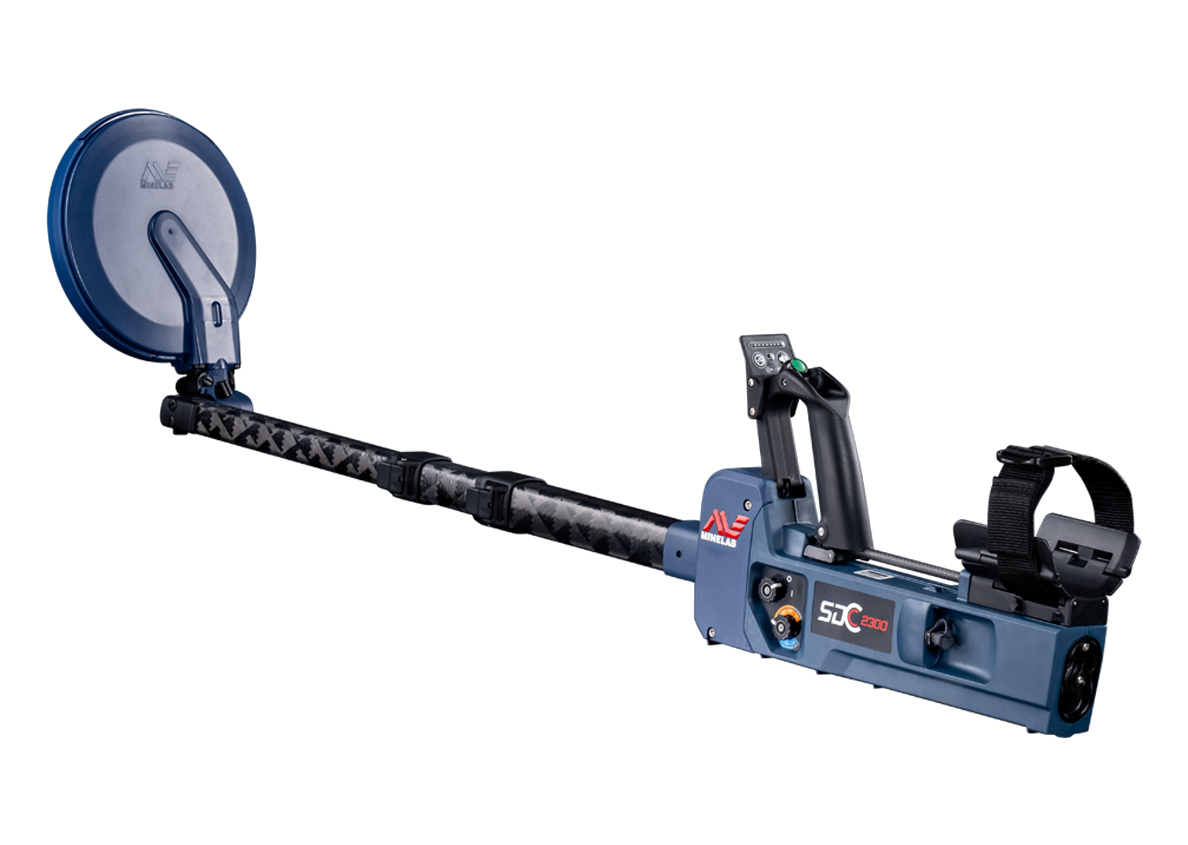I’ve been using the new SDC 2300 for a few weeks now, testing it out for coin and relic hunting.
The first thing I noticed was how easy this detector is to use. Assembly is simple and quick... resembling something from Transformer movie. Then at the end of the day it folds back down in less than a minute, and can be slipped in to a backpack for discrete transfer home. Many times I’ve thought to myself “I’m carrying a detector worth thousands of pound, and in full view of potential thieves”.

Controls are minimal and simple to understand. You have an On/Off switch that you pull out and twist to operate. You have a second similar looking rotary switch that operates two modes, and the sensitivity levels of the chosen mode.

Ground balance is automatic, but you also have a Fast Ground Balance option via the green push button at the top of the handle assembly.
The final controls are two push buttons, below a LED display, that adjust the Threshold and operate an automatic Noise Cancel. Press them both together to check the battery condition.

Over my test bed I was impressed at the depth I got on coins to ten inches, but was less happy about the lack of iron rejection. I must admit I contacted Minelab to question their wisdom is pitching this detector in the UK which has not got a large gold prospecting community. I was told to keep an open mind.
My first detecting trip was to a forest with a small pasture field at its centre. The ground was sandy with lots of ironstone. I chose this field because it was highly mineralised and previous finds included iron-age gold quarter staters.

I was soon digging lots of targets and it wasn't long before I dug my first Celtic bronze coin, this was followed a few minutes later by a second. Small ferrous targets were a problem; I dug lots of nail remnants from the sandy soil. I was just about to call it a day, detecting along the side of the field when I got a strong signal response from the SDC 2300. Digging out a plug of soil I checked the hole, when I caught a glimpse of something flat and gold coloured sticking out of the sod. I reached down and pulled what I believed was merely a squashed brass coloured screw bottle top, but in my hand I could feel if was heavy and realised it had to be gold. On closer inspection, careful not to rub off the abrasive soil, I could see it had a hand punched beading inside the legend... It was a gold Roman coin!

Here is a video a friend shot with his mobile phone.
My conclusion is the SDC 2300 is primarily a gold prospecting metal detector. It doesn't discriminate so may have some limitations in sites with high-iron contaminated soils.
To be honest any metal detector would've found this coin, it was less than three inches deep.... However, in Part 2, I return to a hoard site in Croatia and recover coins NO other detector could find!





















Comments
To make comments you must be logged in, please note comments will not display immediately due to moderation